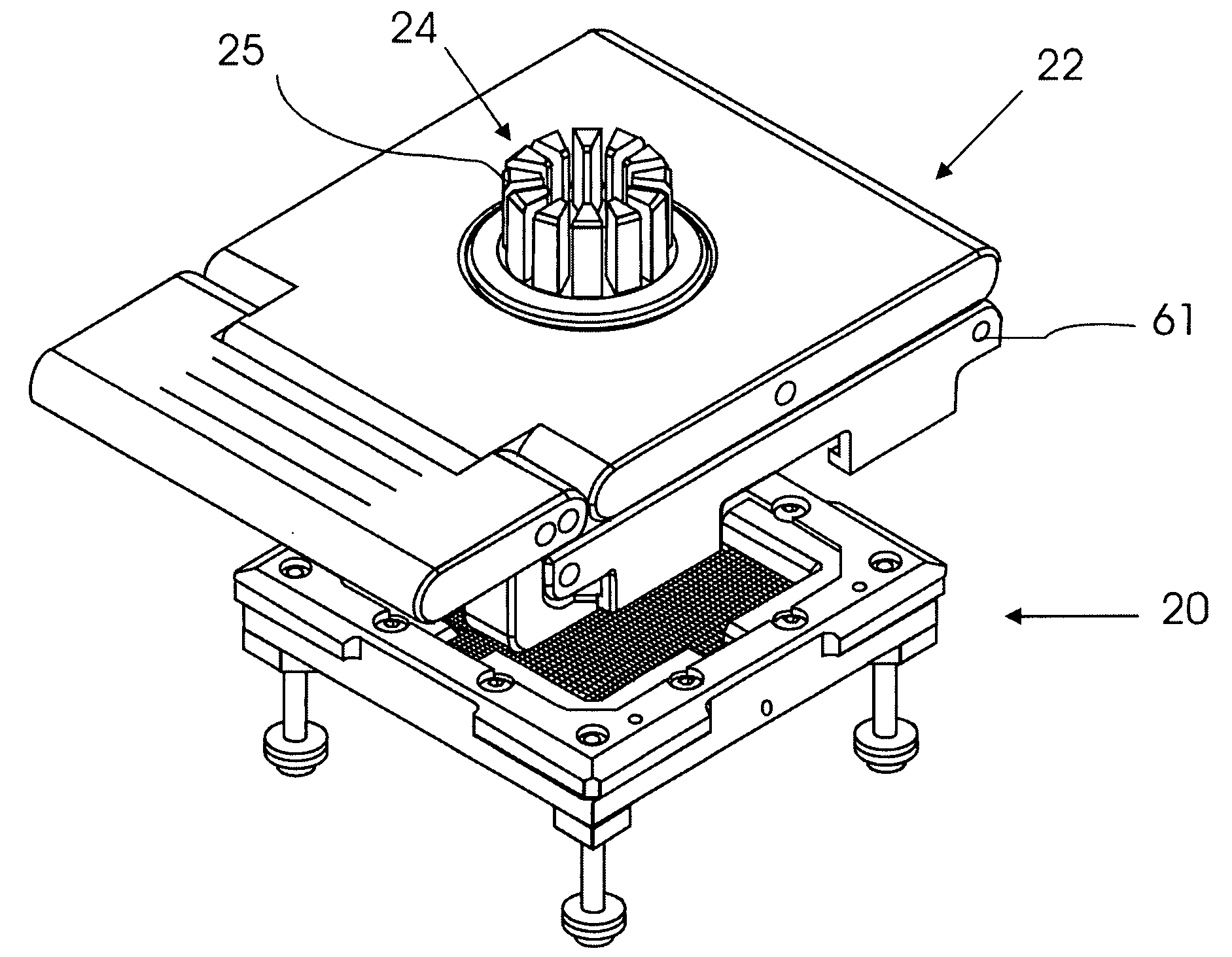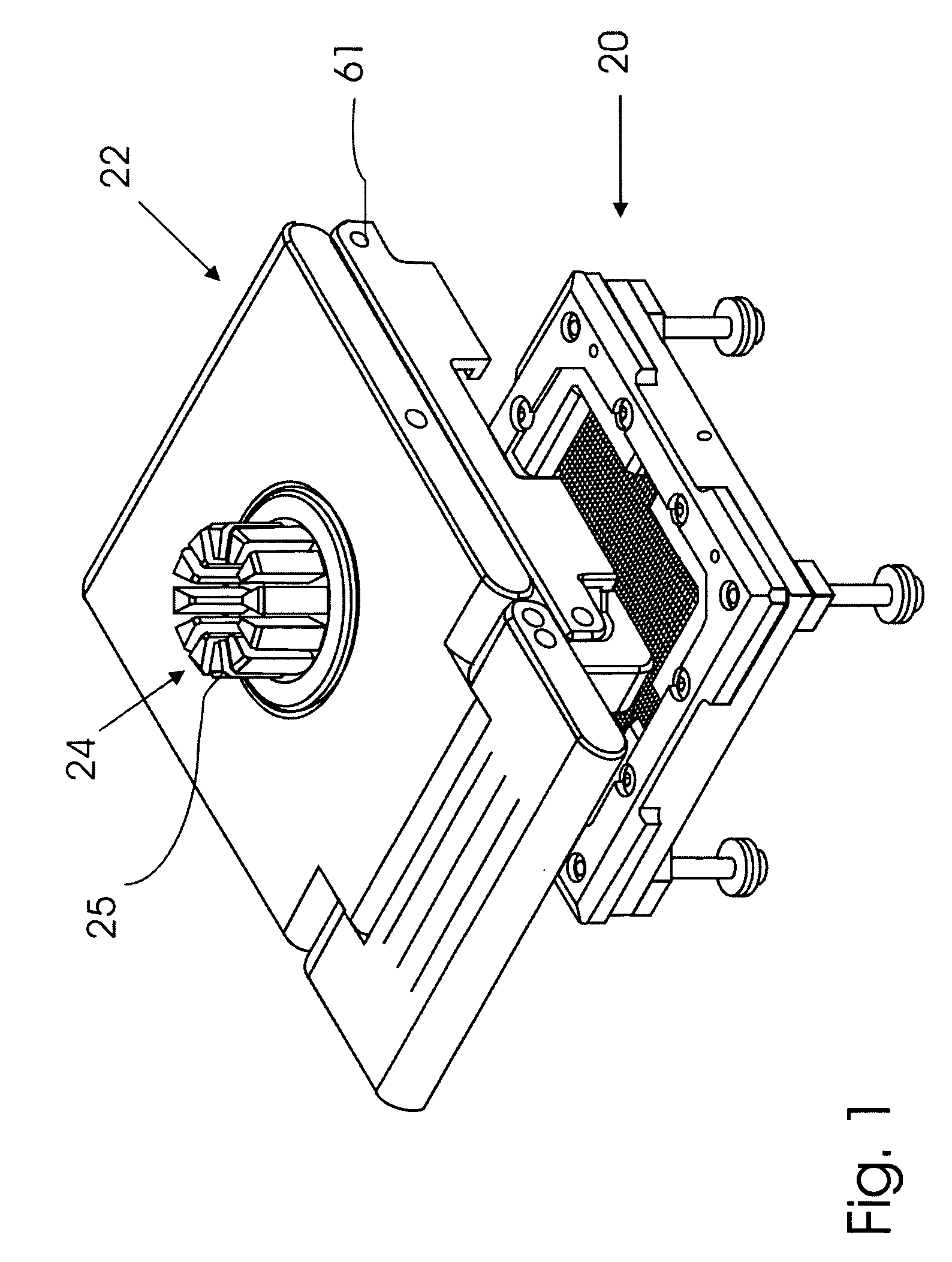Test socket-lid assembly
- Summary
- Abstract
- Description
- Claims
- Application Information
AI Technical Summary
Benefits of technology
Problems solved by technology
Method used
Image
Examples
Embodiment Construction
[0021]FIG. 1 is a general three-dimensional view of a lid-socket assembly of the invention for retaining electronic devices, e.g., IC chips, in a fixed position for testing their properties. It can be seen that the assembly consists of a socket sub-assembly 20 and a lid sub-assembly 22 that can be quickly and easily attached to the socket sub-assembly 20 by means of a locking mechanism (not shown in FIG. 1). Furthermore, the lid-sub-assembly supports a pusher 24, only a heat-sink portion 25 of which is seen in FIG. 1. FIG. 2 is an exploded three-dimensional view of the socket sub-assembly 20, and FIG. 3 is an exploded three-dimensional view of the lid sub-assembly 22. The pusher 24 may be realized in different embodiments. In the embodiment shown in FIG. 1, the heat sink member 25 is formed on the upper end of the pusher and projects outward through the central opening of the lid sub-assembly 22. FIG. 4 is a three-dimensional view of a lid sub-assembly 22′ in a closed state with a h...
PUM
 Login to View More
Login to View More Abstract
Description
Claims
Application Information
 Login to View More
Login to View More - R&D
- Intellectual Property
- Life Sciences
- Materials
- Tech Scout
- Unparalleled Data Quality
- Higher Quality Content
- 60% Fewer Hallucinations
Browse by: Latest US Patents, China's latest patents, Technical Efficacy Thesaurus, Application Domain, Technology Topic, Popular Technical Reports.
© 2025 PatSnap. All rights reserved.Legal|Privacy policy|Modern Slavery Act Transparency Statement|Sitemap|About US| Contact US: help@patsnap.com



